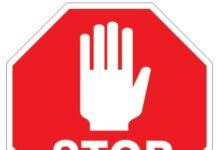Tis I, the inscrutable and possibly indestructible* THE Original Mr. Home-Boy
*I started to write this post about two weeks ago, but was absolutely destroyed by a lymphatic infection. Maybe bragging about being indestructible is how I got destroyed. That is how things work, I suppose.
I have now completed the NAUI SCUBA open water introductory dive test and received a scuba certification. Here is a little bit about the NAUI version of the open water dive test that I experienced should any of you hep-cats want to get certified…
[adinserter name=”Block 1″]
First, it is an “open water” test as in a body of water out in nature. Not a pool, ya feel me?
For my open water dive test we used an old quarry that has filled with water and is now used exclusively for SCUBA practice.
Where you live there might be better options for an introductory open water diving test, but in the wilds of Pennsylvania a quarry was our least worst option.
The benefits of diving in a quarry – no current, relatively controlled conditions, no dangerous aquatic beasts or fish-men tried to attack us.
The negatives of diving in a quarry – above the thermocline the water was warm, but below the thermocline the water was very cold, limited aquatic visibility, sediment from the bottom was easily stirred up and turned the limited aquatic visibility into zero aquatic visibility.
For anyone that cares, the quarry is near Hollidaysburg, Pennsylvania and is maintained by the Laurel Divers.
Enough about this damn quarry already! Unto the details of the test.
[adinserter name=”Block 2″]
You gear-up on land as we did during our practice session in the pool (we brought the wet-suits, tanks, buoyancy compensators, etc. up in a trailer).
Then, it was to the water.
For water-entries we did the giant-stride entry off of a pier and into the quarry.
We started with basic underwater tests, which were exactly what we practiced in the pool: blast clearing of a flooded mask, retrieve a regulator, buddy regulator exchange and then surface, and buddy push-pull towing.
Then, it was time to move into the deeper water portions of the test.
Deeper water exercises included descending to a platform that was submerged about 16 feet down (good for practicing balancing your ear pressure), taking our gear on and off underwater, and then practicing buoyancy.
Yes, there are fish in the quarry and they were very curious as to what we were doing on the platform.
Buoyancy in open water is a lot different than being buoyant in a pool. In a pool you only have a few feet of room to try and maintain your buoyancy. In the open water your heavy ass can sink to the bottom quickly if you aren’t maintaining a proper buoyancy. It definitely takes some practice to get your buoyancy compensator to have just the right amount of air in it.
To exit the quarry we did Caribbean exits.
That was basically it – we did the standards exercises and basic tests over four dives spread over two days; simply stuff, but still fun!
[adinserter name=”Block 3″]
I admit that I had a bit of anxiety about the test simply because I didn’t know what to expect. Luckily, the classes that we had before the test did a good job of preparing us for what to expect.
If any of you are thinking about getting SCUBA certified or have questions about the test let me know.
I can’t wait to test my certification out in the wilds. Time to book an adventure. I hear that the hammerheads in Bimini are nice.



